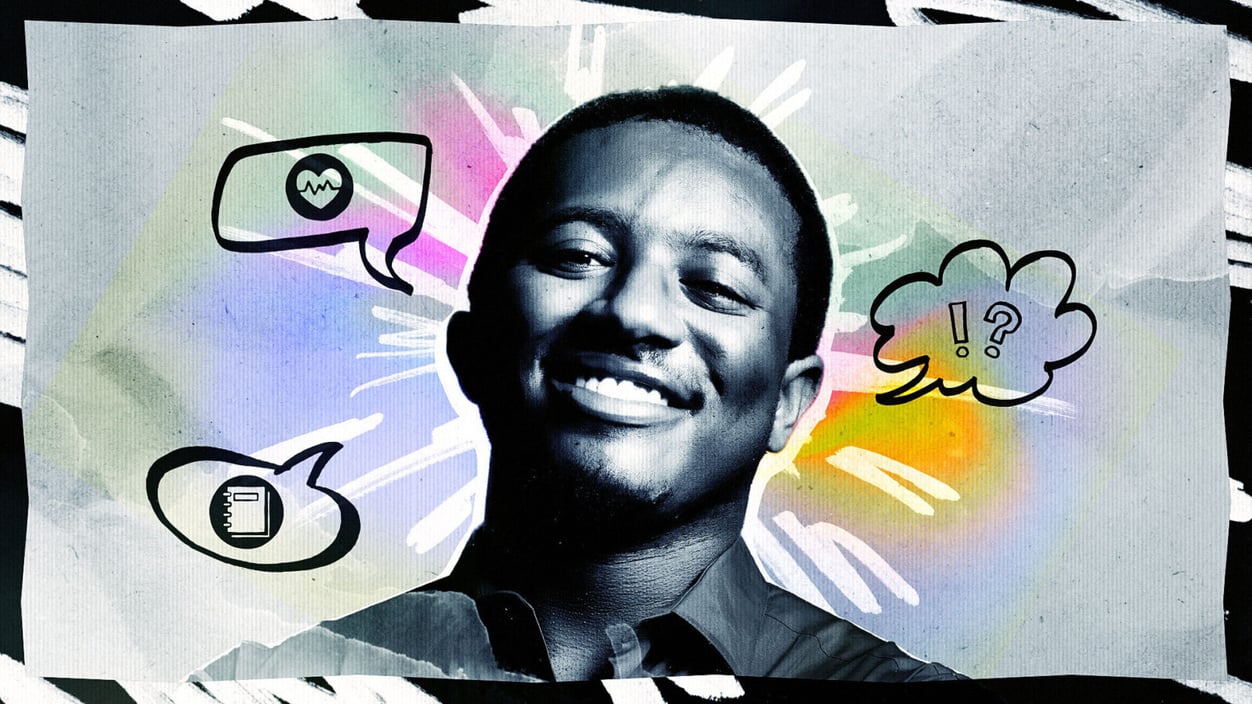Closer Look
Living with a rare immunodeficiency disease, sharing hard lessons 
Photo illustration: Casey Shenery for STAT
When he was four months old, Casey Warford (above) was diagnosed with chronic granulomatous disease, an inherited immune deficiency that made him highly vulnerable to infections. In college he had such a serious infection he was in a coma for three days after a fungus attached to his brain, eventually requiring four surgeries. He talked recently with STAT's Isabella Cueto.
When you were a kid, how would you explain your condition? I'd straight-up tell them I have a low immune system. Like, you can go swim in a lake; I can't. You can mow the lawn; I can't.
How did you go from being a shy kid to being on stage performing? That was where I was able to be myself. Just being on stage, I wasn't Casey, the CGD patient. I didn't have to think about doctors' appointments or taking medication. I got to be someone else for that hour and a half.
Now you speak to young patients, in part as a patient ambassador for Horizon, which makes a CDG drug. For me, the mindset was: Help these kids avoid what you dealt with.
Read the full interview.
global health
Egypt is on the path to eliminating hep C, WHO says
Egypt is well on its way to eliminating hepatitis C, the viral infection that can lead to liver disease and cancer. There is a cure, but 4 out of 5 people living with hepatitis C don't know they're infected. Egypt has been extraordinarily successful, the WHO said yesterday when naming it the first country on the path to eliminating the disease: It has diagnosed 87% of people living with hep C and provided 93% of those diagnosed with curative treatment, exceeding WHO's targets of diagnosing 80% and treating 70% of those diagnosed.
Egypt began offering free testing and treatment in 2014 and by 2015 had become a hot spot for delivering what was then a new wave of curative drugs. This 2017 STAT story told us how an Egyptian drug maker turned that into medical tourism ("Come see the Sphinx and save on Sovaldi.") In contrast, last year Nick Florko told us cures are still out of reach in U.S. state prisons.
in the field
Soccer goalies see and hear the world differently
Soccer goalkeepers are different from you and me. Whether playing professionally, on school teams, or just as weekend warriors, they all make split-second decisions about balls screaming toward their impossibly wide nets. New research in Current Biology to explain this ability comes from an impeccable source: Michael Quinn, a Dublin City University researcher, a retired professional goalkeeper and son of former Irish professional Niall Quinn (a striker, but still). He wanted to understand how goalkeepers perceive and process information.
His research team compared how 60 people — goalies, outfielders, mere mortals — managed visual and sound cues in the form of flashes and beeps. Most of us mistakenly blend one flash and two beeps together, saying there are two flashes, especially if there's little time in between stimuli. But goalkeepers were better and quicker at separating the visual and auditory information, which may translate on the soccer pitch as hearing a ball kicked and seeing it (if they're not blocked) move in the air. Still unanswered: Was it training or inherent ability that made them succeed as goalkeepers?




 Adobe
Adobe

No comments